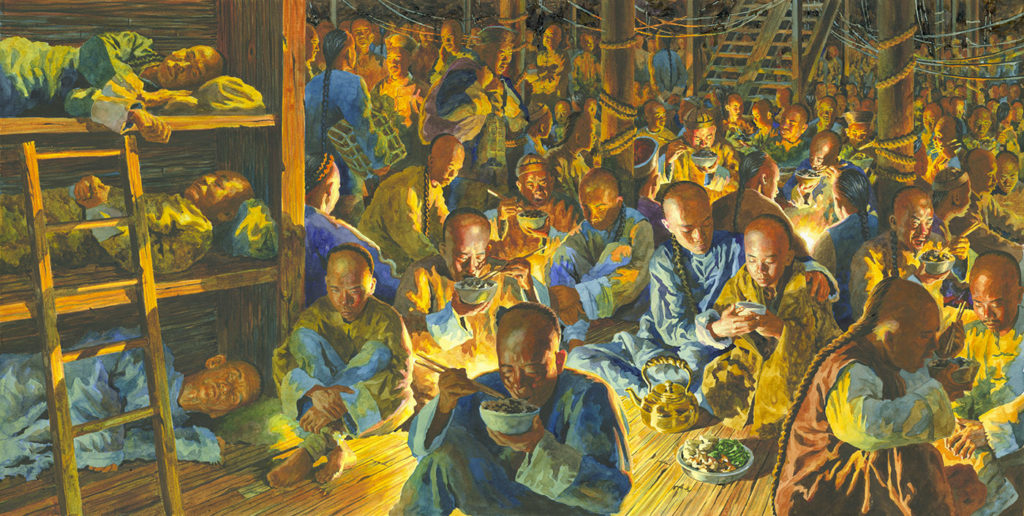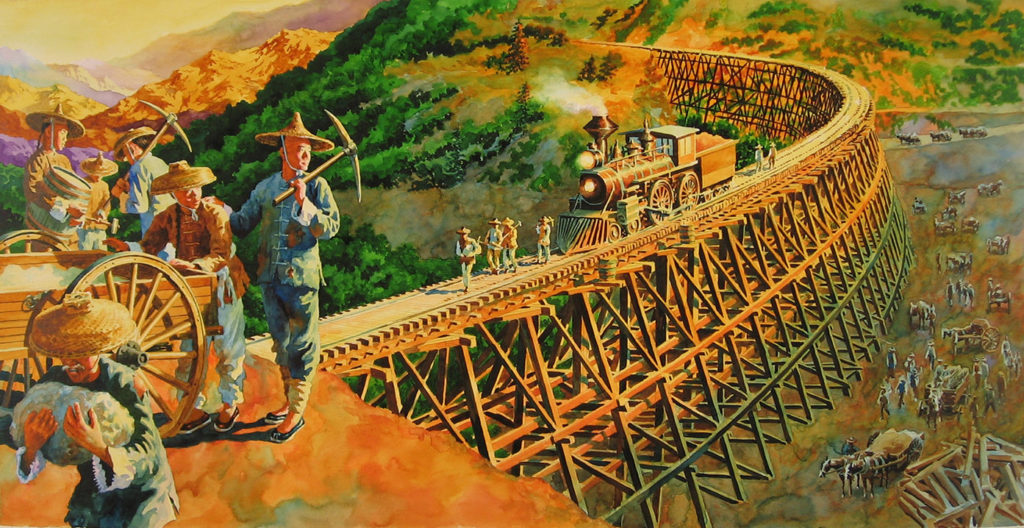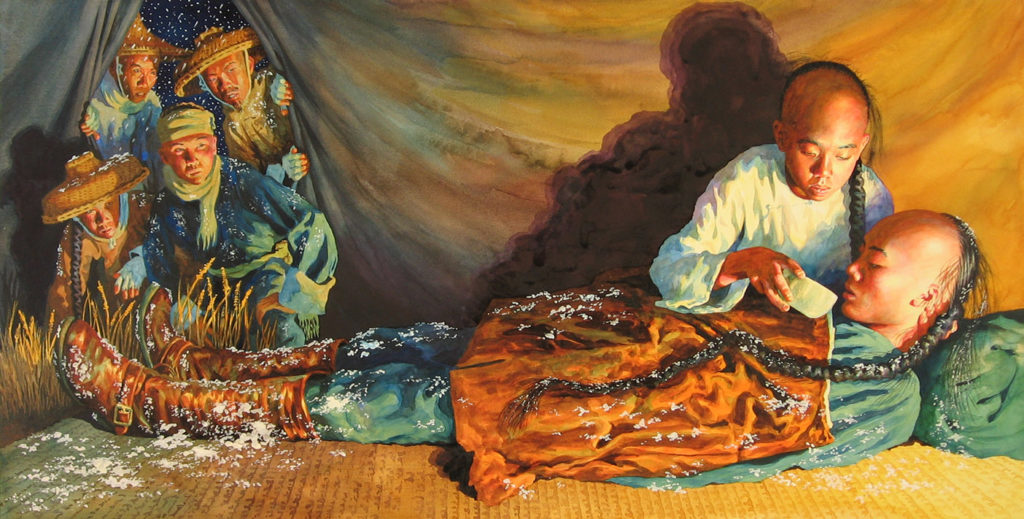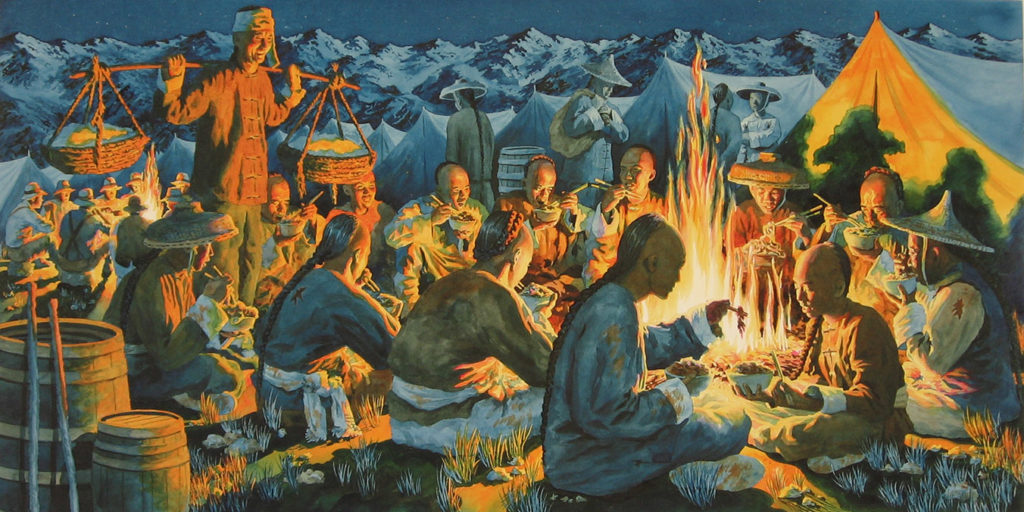BOOKS AUTHORED BY YIN
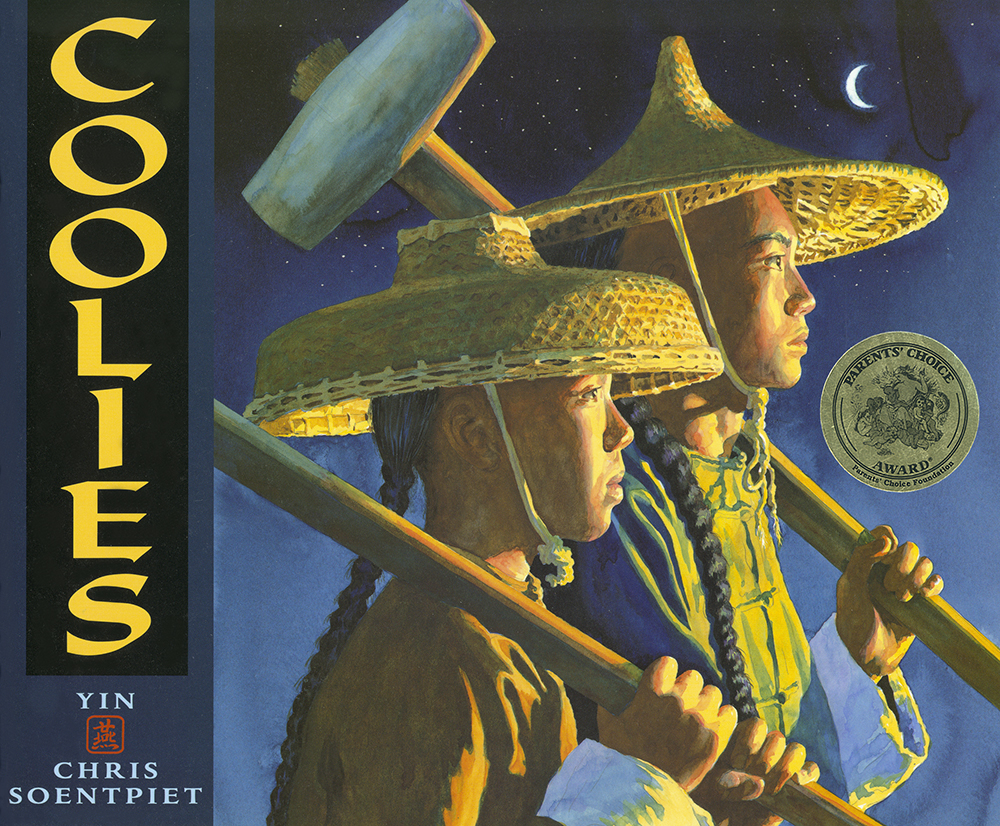
COOLIES
Author: Yin
Illustrator:
Chris Soentpiet
Editor: Patricia Lee Gauch
Gr 4 and up/Ages 8+
40 pages/picture book
12″X 10″
ISBN #0-399-23227-3
hardcover
$16.99 US
$25.50 CAN
ISBN #0-14-250055-0
paperback $7.99 US
$11.99 CAN
Philomel Books imprint of:
Penguin Putnam Books
345 Hudson Street
New York, NY 10014
(800) 526-0275
www.penguinputnam.com
Coolies
When Shek and Little Wong journey to America in 1865, they have work! Along with hundreds of other Chinese, the brothers are going to help build a great railroad across the West. But as days grow into months, Shek and Wong endure more than they could have imagined-bleeding hands, blasting dynamite, and treacherous avalanches. For very little pay. Are they being treated this way because of their almond-shaped eyes-because they are coolies? Inspired by actual events in the history of the American railroad, COOLIES reveals the harsh truth about life for thousands of Chinese laborers, while it celebrates the love and loyalty between two brothers who were determined not only to survive, but to succeed.
WORDS FROM THE AUTHOR, YIN:
As a second generation Chinese-American, I grew up in Manhattan near Chinatown where I was exposed to my cultural heritage through Chinese and kung-fu school on Saturdays, and family gatherings over dim sum on Sundays. Because I did not learn about the Chinese contribution in American history in school, I felt the desire to research it later in life. My startling discoveries resulted in the story of COOLIES, which was my way of honoring the Chinese railroad workers’ sacrifices and contribution.
Here I am standing at the meeting hall of the Consolidated Chinese Benevolent Association (aka: Chinese Six Companies) in San Francisco. In 1882, it was formed in response to racial attacks against the Chinese. It dealt with city, state, and national government regarding issues of immigration and persecution.
For the research of COOLIES, I interviewed my closest source, my grandmother. The Chinese railroad workers were mainly from my ancestral village in Toishan-Canton, China (the early Chinese-Americans speak Cantonese). Since this is a historical story, I had to compare my grandmother’s memories to the information I collected at the library to make sure the events and dates are accurate. A trip to the Golden Spike Museum in Utah where they showed me some old original documents was an integral part of my research.
I hope you’ll enjoy COOLIES as much as I’ve enjoyed writing it! -Yin
A WORD FROM ILLUSTRATOR OF “COOLIES”:
When I read the COOLIES manuscript, I was immediately interested in the historical setting. I went to the library to learn more about the Chinese railroad workers. This will help me visualize how I want my paintings to look like. I needed to know the type of ship to draw, how they bowed, how they wore their hair, the style and color of the clothes they wore. I even needed to know how the Chinese arranged the food on the table during the ‘Ching Ming’ dinner celebration. For further research, I visited the Golden Spike Museum in Utah. I even traveled to China for some of the props. Each illustration would take me two weeks to paint because of all the background details. The entire painting process took me a year.
-Chris Soentpiet
BOOK REVIEWS:
As a boy and his grandmother celebrate the Ching Ming Festival, a holiday honoring one’s ancestors, the grandmother tells the story of her great-grandfather, Shek, who came from China to California in 1865 to work on the transcontinental railroad. Shek and his little brother Wong endured the two-month trip to America and immediately signed up with the Central Pacific Railroad Company to work as laborers. The Chinese workers, known derogatorily as”coolies,” from a Chinese word meaning”bitter labor,” were paid less than their European counterparts and were often given the most dangerous jobs, those involving explosives, for example, and were forced to work in terrible weather conditions. (The author’s note informs the reader that thousands of Chinese laborers died while working on the railroad.) Shek and the other Chinese workers tried to stand up for themselves by staging a strike, but were forced to back down before any of their demands were met. Even when the railroad’s completion is celebrated, the importance of the Chinese laborers is ignored. After four years on the railroad, Shek and Wong used their earnings to open a store in San Francisco and eventually brought the rest of their family over to the US. Soentpiet’s signature glowing watercolors bathe the images with light. The pictures of big scenes-the teeming shipyard, the crowded living quarters on the ship, a campfire surrounded by snow-covered mountains, a busy San Francisco street-are striking and grand. The design-each double-page spread laid out with ¾ of the page as illustration while the ¼ on the left holds the text in a box-allows for a fuller view of the sweeping scenes. This is an important story,full of drama and emotion and it is here given its proper recognition and tribute in both words and glorious art. Perhaps it will encourage other grandparents to share their family history as well. Masterful.
-KIRKUS REVIEWS
“Chris Soentpiet’s Coolies is illustrated with authenticity and drama, and gives the Chinese people who participated in the building of the transcontinental railroad dignity and respect – both for their hard work and their dedication to family. The word “coolies” reflects this. The character for “coo” stands for bitter, but implies it is the taste of people who have experienced hardship and survived. The character for “lies” means labor. Together the characters mean more than bitter labor, however; they imply that it is through laboring hard together that human beings become adults. It is not surprising that the word “coolies” is regarded with respect by the Chinese people–there would not be a Great Wall of China without their bitter labor.”
-ED YOUNG, Winner of the Caledcott Medal for “Lon Po Po”
“What a beautiful book by Chris Soentpiet, revealing the important place of the Chinese in our country’s history: these humble laborers built a railroad that united East and West. This title will be provocative for adults as well as young people.”
-JEAN FRITZ, Winner of the Newbery Honor Book, “Homesick”
PARENT’S CHOICE (GOLD AWARD WINNER 2001):
This grandly-conceived and beautifully-illustrated oversize picture book merits praise and the widest possible readership. It tells the epic tale of the role that unskilled Chinese laborers played in the building of our transcontinental railroad. Through the story of two young brothers, Shek and Wong, who leave Canton, China in the mid 1800s because of a famine and their family’s desperate need for money, we make the two-month crossing by ship to San Francisco, join them in the grueling work of slamming sledgehammers into spikes to lay the rails, and feel their loneliness and isolation as they are discriminated against and paid lower wages than white workers. The text is simply and movingly written; the pictures are little short of breathtaking. Oversized virtuoso watercolors, they are teeming with people, with scenery, with the life of the camps, with the dangers of the terrain. Considered “coolies,” a Chinese term for the lowest of unskilled laborers, they were not even allowed to attend the celebration when Irish rail-layers from the East met the mostly Chinese workers from the West at Promontory Summit, Utah. It is a gripping story, magnificently illustrated–a book not to be missed.
– Selma G. Lanes ©2001 Parents’ Choice
HONORABLE MENTION (for Illustrations in Children’s Literature 2001):
Coolies depicts the story of two brothers, Shek and Wong from Canton China. They came to America in 1865, laboring to help build the transcontinental railroad from Sacramento to Omaha. The story also describes the hard life and dangers that Chinese workers faced during the construction of the railroad. The excellent use of color and true to life facial expression earns the book honors in illustration.
– Asian/Pacific American Librarians Association
AWARDS
- Junior Library Guild Selection 2001
- Nest Literary Classics 2001
- Parent’s Choice Gold Award 2001
- Children’s Literature Choice Book
- American Library Association Notable Books 2002
- International Reading Association (IRA) Children’s Book of the Year 2002

